#rabbinism
Text


redraw of one of my favorite lines from le chat du rabbin that i think fits these two very well
og under the cut + explanation

“Je lui demande de me montrer une image de Dieu. Il me dit que Dieu, c’est une parole.”
R. Line justifies her neglect and disdain towards Trey, her own son, by using the Gospel of Three Dimensions, claiming that the Holy Sphere purposefully guided evolution to give Women larger brains than the Isosceles of the village. Women are inherently better, and are above the Isosceles: this is the structure set in stone. Trey, suffering daily under this dogma, questions their religion and the existence of the Holy Sphere. If the Sphere was real, he would have already saved them from the conditions of poverty and suffering their villages are put into. Because of R. Line's overbearing nature and refusal to accept any other point of view other than her own, Trey does not believe that the Third Dimension or an afterlife exist. R. Line is content with sending her son to his own death, under reassurance that their next life in a higher dimension is all that matters.
umm now some very choppy explanation of symbolism in this bc it's hard to put into words:
-The background is yellow to show the idea of the Sphere, specifically R. Line's ideal of the Sun as a holy object that is intertwined with the Holy Sphere: Only R. Line's beliefs are what matter, and are extremely overbearing and searing. R. Line is outlined in yellow, as well as the pupil of her eye being yellow to show this ideal is the lens she views the world through. Trey does not conform to the idea of a Holy Sphere, and has no yellow on him, but he is surrounded by it because it is forced onto him.
-Also relating to their pupil colors: In white, Trey is seeking out an answer grounded in reality and truth. In yellow, R. Line makes up her own answers, and justifies them through saying they are only what the Sphere would want. Similarly to this: Trey has a very solid outline because he wants direct answers that make logical sense and can be proven. R. Line's outline is blurry/indistinct because she is willing to lead her life using blind faith. Trey's limbs are fading because his limbs are the body part that have the most semblance to his mother (very angular + have spikes on the shoulders), and no matter what he does, he is still his mother's son. + it also shows how he does not have much time left before his death
-The black holes on the bottom represent the cross-sections of a Sphere, and the Sun in the back represents R. Line's pendant. These are not concepts that can be translated correctly into 2-Dimensions, and stick out as something that is really not true. These concepts are shadows displayed on a wall in an attempt to mimic the real thing, hence them being black and solid. It is an attempt for them to project the Sphere into their lives, but in the end, it is all false. The idea that R. Line dedicates herself to, an all-powerful and omnipotent Sphere that will bring salvation, is false. But she whole-heartedly believes in them, and willingly allows them to consume her life. It is also why she is fully black: Her life is only a vessel for her belief in the Sphere, and she has no real emotional connection to this plane of existence. This is also why blood is draining into the most prominent cross-section: She allows so much death and suffering, ruins the lives of all that get close to her, watches her son's death without lifting a finger to prevent it. All in the Sphere's name.
#flatland#cw bright colors#cw blood#trey#r. line#there’s a lot of symbolism in here Tears it apart to shreds#anyways trey is literallyyy le chat du rabbin. he’s even his voice claim#cw scopophobia
54 notes
·
View notes
Text
Do you know this Jewish character?

#jumblr#jewish characters#le chat du rabbin#the rabbis cat#malka of the lions#jewish story premise#I’m now reading Klezmer: Tales of the Wild East#so expect to see characters from that soon too#this is actually a joann sfar fan account now
31 notes
·
View notes
Text
Its resident handbook says that its facilities and programs cannot
• Partner or work with individuals, organizations, or movements that seek to create a combative political environment, impose one particular political or religious agenda as the truth, or whose core values, strategies, or tactics include antagonizing those with different political views, Jewish people, or Jewish organizations.
• Act as a platform or tool (at Moishe House programs or through Moishe House affiliated social media accounts) to impose personal religious or political views on participants or the community.
• Endorse, advocate, or serve as a platform for physical harm to Israelis or deny Israel’s right to exist as a secure, democratic Jewish state, including support for or participation in the BDS (Boycott, Divest, Sanction) movement.
Kleinman violates Moishe House's written policies.
She is a member of Jewish Voice for Peace Rabbinical Council.. This disqualifies her from any role in a Zionist organization. Indeed the only reason she could want to be a member of such an organization without being a hypocrite would be to poison it from the inside. After all, JVP supports BDS. JVP has supported Hamas, saying kaddish for terrorists and sponsoring events that called October 7 "resistance" an "self defense."
Even in this video, Kleinman calls Israel's actions in Gaza "genocide." If you ask her whether Israel has a right to exist as a Jewish state, you can be sure her answer would be no.
The Washington Post does not see that as a reason that she might be fired from a Zionist organization. It didn't even ask Moishe House for their side of the story. Instead, it takes her at her word that she was fired because she advocates for a ceasefire.
Why bother checking out the facts, when everyone at the WaPo knows that Zionist Jews are just that evil?
14 notes
·
View notes
Text
Hey, Jumblr! So I'm a Jewish materials scientist and I find this on my local job board
Material analyses of medieval Torah scrolls as part of the joint project "Materialized Holiness: Torah scrolls as a codicological, theological and sociological phenomenon of Jewish written culture in the Diaspora" funded by the Federal Ministry of Education and Research (BMBF):
Tasks include:
Preparation of national and international measurement campaigns, if necessary, implementation of exploratory trips
Instrumental examination of Torah scrolls (writing inks and writing supports)
I want this job. I want it so bad! Spending all day looking at beautiful old Torah scrolls! Visiting repositories of medieval Jewishness! 🕎❤️✡️❤️
But my work history is in making (and measuring) metal stuff, not historical materials or cultural preservation. So, how do I talk my way into this? All suggestions gratefully received ❤️
#jumblr#jewish#being able to have a Jewish job would mena so much to me#but I don't have the training for like 90% of them#and I don't have the Hebrew for Rabbinical college
16 notes
·
View notes
Text

you people are insane
#imagine i see talmud rpf and im intrigued enough to click#and i ???? clearly it means what it says which i can commend but i have no idea how to feel about it#jumblr#rabbinic rpf#??
139 notes
·
View notes
Text
It was this concept that the Sages suggested with a parable about God's motive for creating the day. A king ordered that a signet ring be fashioned for him. His artisans presented him with a precious band inlaid with sparkling gems. It was a thing of beauty--but the seal was lacking. Whatever value the ring might have, it could not be used as a signet unless it contained the seal which alone would give it the utility its owner required. So, too, the universe. It might be a naturalist's paradise, a scientists' challenge, a tycoon's gold mine--but the King wanted it to be his signet ring. He wanted Creation to meld all its accouterments into a combined vehicle for declaring his glory. The newly born universe was lacking the seal of the King. So He gave it the Sabbath, the say that proclaims, 'The world has a Creator and a purpose.'
Rabbi Shimon Finkelman, Shabbos: Its Essence and Its Significance
53 notes
·
View notes
Text
On...This Nonsense
So, I saw this graph in a group I am a part of, and it is so increadibly wrong that I need to rant about it:

K, this is dumb for .... a lot of reasons.
I am sure Muslims and Christians can see a load of issues that I can't, but that aint my focus.
I'm just going to talk about the Jewish religions, the flow, and use Christian and Muslim religions as comparisons.
First of all, the term of the parent religion: "Judaism".
The term comes from "Judean" or basically members of the tribe of Judah.
The first definite use of it as a general term for Hebrews is in the Scroll of Esther where it calls Mordechai "a member of the tribe of Benyamin, a Jew" (paraphrased for clarity).
That takes place around 480-350 BCE (scholars argue about which Emperor is the one mentioned).
(the term is used elsewhere/earlier, but usually a refrence to a member of the tribe of Judah, or else in a way that could go either way).
Now the reason I mention that, is because:
"Northern Tribal" would never have used the term, as they are from the ten lost tribes, and had a separate kingdom (Israel) VS Binyamin and Judah who had the southern kingdom (Judea).
Samaritans consider themselves to be descendants of the tribe of Manasheh and Ephraim, so wouldn't use the term either.
So the top religion should really be Bnei Ysrael, or Hebrew, or Isrealite.
Next: what the fuck is "Northern Tribal"?
The split b/w the ten tribes and the 2 was political, not religious.
They remained the same religion until they stopped existing/were lost/ the Samaritan split happened.
I even googled "Northern Tribal Judaism" (and variations) and couldn't find jack shit.
It really shouldn't be on there.
Now, when/how Samaritanism and Judaism split is both a theological and historical debate.
(to the point that talmudically there were issues with drawing lines between the 2).
Hell, I have hear people use the term "Samaritan Jew" before. But tbh, it is innacurate, and insulting to both religions imo.
But either way the first split should be:
Judaism-Samaritanism
On the same level in the chart it has Saducee, Pharisee, Eseen, and Christianity.
Which is bonkers.
There were difference between the three groups, but they were not on the level of being schisms or seperate religions like christianity.
If you wanted to argue that they are, then Christianity would be descended from one of them (or all three).
Because there wasn't a monolith religion for all 4 of them to come from.
The split was there when Jesus was born.
So After Judaism you either have "Christianity"
Or you have "Pharisee" "Saducee" "Essene" and then a line below you get christianity.
Next Line:
"Karaite" "Orthodox" "Sephardic"
That is the most bat shit thing I have seen in my life.
First of all: "Sephardic" isn't a religious movement or theology.
It is a culture and set of traditions.
Putting it in a flowchart as its own heading, the same way Christianity and Islam do is insane.
Secondly, even if you do so, the others in the split should be: "Ashkenazi" "Temani" "Mizrachi" and a couple of others.
not "Karraite" and "Orthdox"
Next, while Karraite does deserve it's own spot (I can do a dive into the theology of it later)
It Should be as a descendent of Pharisee with the other branch being Rabbinic.
Next: "Orthodox" with descendents of "reform" "conservative" etc.?
No! The term "Orthodox" exists as a counter to those!
And only (until very recently) in Ashkenazi Judaism!
Now maybe the reason that they divided Sphardic it's own heading was to indicate that they don't have sects like the Ashkenazi do, but still, wtf?
And Splitting Hasidic that way? like it is equivalant to any of the splits in Christianity or Islam is batshit.
So really after "Rabbinic Judaism" you should get:
"Ashkenazi Sectarianism" and "Not that"
And put all that shit under Ashkenazi Sectarianism.
Anyway, this graph sucks, Maybe I'll improve it later.
#judaism#jewish#jumblr#Christianity#religion#Samaritanism#karaite#reform#orthodox#rabbinic judaism#Maybe one day I'll do write up on the issue with orthodox and reform#or karaite#but that'll be a lot of effort
33 notes
·
View notes
Text
19 Menachem Av 5784 (22-23 August 2024)
There is a Talmudic saying that the amount of wisdom we can capture and pass on from prior generations is comparable to the amount of water a dog can drink in comparison to the entire ocean. And to even be able to preserve this much of the learning of the past requires numerous humble souls willing to devote their lives to making the lessons of prior generations accessible for study. How many nameless scribes are we dependent on for every letter of Torah that’s been passed down to us! One such pure soul was Yaakov Culi, whose yahrzeit is celebrated on the nineteenth day of the month of Av.
Culi was born in Ottoman Palestine in either Jerusalem or Tzfat to a Sephardi rabbinical family that had left Iberia several generations earlier. As a young man, he became determined to collect the writings of his grandfather, Moshe ibn Habib, the Sephardi chief rabbi of Jerusalem, who had died at the age of 42. Habib had been a prolific scholar and had composed numerous commentaries and treatises but had died without any of them reaching publication, and left multiple unedited or incomplete works. His grandson Yaakov collected them, organized them, and edited them in preparation for publication, but the Jewish community of Eretz Yisroel at the time possessed no printing press. Yaakov did not let this obstacle stand in the way of completing his objective. Instead, in 5474, he departed for the Ottoman capital of Constantinople, which had multiple Jewish printers. There, Culi befriended the chief rabbi of the city, Judah Rosanes, who was impressed with his knowledge and supported his efforts to publish the works of his grandfather. It took Culi eleven years in Constantinople to bring his grandfather’s manuscripts to press, but once they were published they became widely acclaimed. Then, while Culi was still working on the publication of his grandfather’s later treatises, his mentor Rosanes died as well, leaving a disorganized jumble of decades of written material. Knowing the efforts which Culi had devoted into collecting and editing his grandfather’s work, Rosanes’ family asked Culi to take charge of his manuscripts as well. He spent the next five years of his life putting them in order and bringing them to press as well. Rosanes’ greatest work, a detailed commentary on the Rambam’s Mishne Torah, is known entirely due to Culi’s efforts.
In the last years of his life, Yaakov Culi embarked on his first publication of his own writing. Concerned about the obstacles to Torah study for the mass of Sephardim in the Ottoman Empire who lacked fluency in Hebrew or Aramaic, or even the Judeo-Arabic in which the Rambam composed his writings, Yaakov Culi undertook to create a commentary making rabbinical Torah scholarship from throughout the ages available in Ladino for the first time. Once again, Culi’s main objective was to make the learning of past generations available to those who otherwise would have had no chance to access it without his efforts. He published the first volume, on Bereshit, and had almost completed the second, on Shemot, at the time of his death on 19 Menachem Av 5492. As he did for others, others did for him, and his project was adopted by other scholars and a full Torah commentary in Ladino completed and published by Culi’s colleagues, according to his plan and using his notes.
This year 19 Menachem Av is also Erev Shabbat. Prepare yourself to greet Shabbat HaMalka and to enjoy the peace she offers us. Candle lighting traditionally takes place at least eighteen minutes before your local sunset. Wishing you all peace and joy!
#jewish calendar#hebrew calendar#judaism#jewish#jumblr#sephardi diaspora#sephardi history#yahrzeit#Yaakov Culi#Torah commentary#rabbinical commentaries#seforim#people of the book#me’am lo’ez#Menachem Av#19 Menachem Av#🌖
7 notes
·
View notes
Text
Ramazanı Nasıl Verimli Şekilde Geçirebiliriz? - Sözler Köşkü #shorts
#10.03.2024#KALBİM BURUK#KALBİM KIRIK#..#Muhakkak ki Rabbin haddi aşanları çok iyi bilir#(Sure No:6 Ayet No :119)#Ya Rabbi C.c ..Emanetlerimide.. Havelelerimide sana niyaz ediyorum.. 🤲🤲🤲
19 notes
·
View notes
Text
a catholic found my 'human bodies are flawed we are not perfect in gods image' and said some shit like 'its because HUMANS are flawed and committed ORIGINAL SIN and now we're STILL PAYING FOR IT' which leads me to the next question. why was it so bad that we obtained knowledge and morality. why was it so fuckin vital to god that we remain ignorant and unquestioning. why is the act of elevating ourselves above the rank of 'glorified pet' so horrific that we still pay for it to this day in the form of bodies that fail and die. and why do you agree that it was bad. and why do you think that judaism, the religion where knowledge and questioning and debate and interpretation are foundational to worship and study, does not use the idea that humans are inherently perfect to guilt and scare people into obedience for a sin that you did not commit? would you punish a child for the sins of their parent? if so, why? what's wrong with you??
#spitblaze says things#this got away from me#anyway. christian theology is dumb read some rabbinic texts and expand your horizons a little#because NOBODY in their right mind in judaism thinks genesis is literal. its metaphor. its symbolism#the fall of man is a metaphor about human imperfection. its fine. nobody needs to repent#GO TEAM SKULL
61 notes
·
View notes
Text

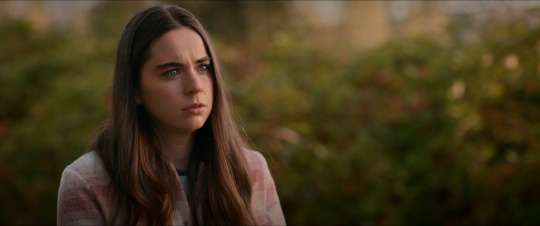
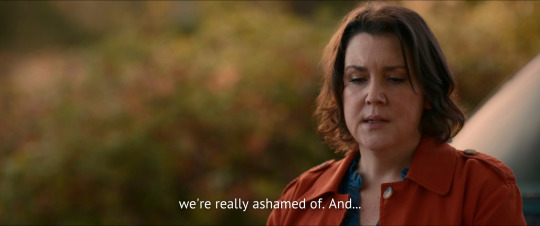



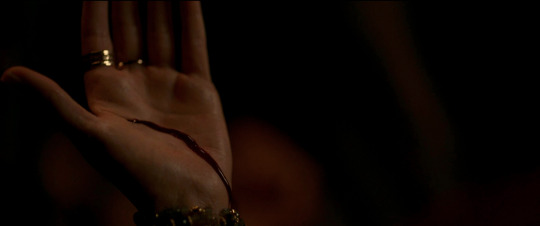
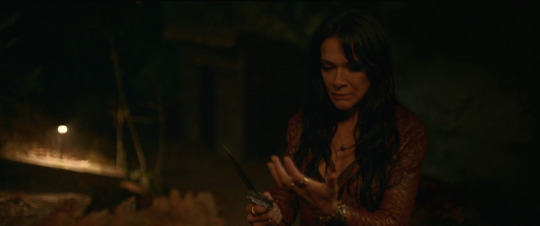
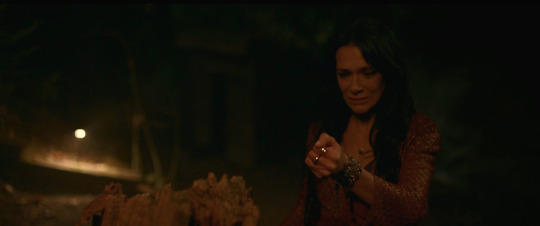

2x04, Old Wounds
#yellowjackets#yellowjackets spoilers#yellowjackets meta#lottie matthews#shauna shipman#im too lazy to get a download of the new episodes or to gif this so this is what we get!!! but i feel CRAZY about it#bc also like. the implication of callie being equivalent to It#shauna begs to callie and lottie begs to Whatever She Begs To#callie as the emblem of shauna's future she is what she is pouring herself into but callie is also inextricably tied#to shauna's past. the daughter jackie should have had. another earthly presence that jackie is haunting#and lottie's whole thing being like. ive moved on from that now. im free now. im better now.#the past rising up to grab her in the place where she meant to make her future but which really is like.#a monument to her past in every possible way#also the idea of words and blood being equivalent sacrifices#shauna kills jackie with words.#also im thinking about like within the torah how when they transition from the temple days to the rabbinic era#how prayer genuinely takes the place of what would have before been animal sacrifices#liturgy as bloodspilling.... it wants blood.....#callie wants blood as in she wants the fullness of her parenst she wants them to see her and trust her...#im spiralling!!!#SHAUNALOTTIE!!!!!!!!!!!!!!
135 notes
·
View notes
Text
Do you know this Jewish character?

#jumblr#jewish characters#le chat du rabbin#the rabbi’s cat#Jules Nahum#jewish story premise#sorry not sorry but I will be rabbis cat posting for a little while longer#I love it so much#this is a pre done post just for today#I’ll get back to posting more submissions tomorrow!
13 notes
·
View notes
Text
Meeting with a rabbi within the next couple weeks !!!!!!!!!!!!!
#jumblr#jew by choice#jewish conversion#personal thoughts tag#they have a rabbinic conference to attend before we meet but !!!!!!!!!!!!!!#i'm feeling very positive about this - they included their own background because i opened up about mine and#their mom is a convert from catholicism which... is it just me or are a lot of jewish converts converted from catholicism??#which is weird because in america catholics are a minority based on numbers (20% of americans)#(which is still a lot but that still leaves 80% of americans)#okay but catholicism is actually intriguing on an intellectual level (mostly because i agree with very little of it)#especially the thing about saints. that one always bothered me#i thought feast days were... contemporary feasts with all kinds of food. i'm disappointed that it apparently isn't
19 notes
·
View notes
Text
Çaresizlikten secdeye kapanıp “vardır bunda da bir hayır ve rabbimin bir bildiği” diyip ona güvenmek..

87 notes
·
View notes
Text
I feel like Christians really missed out on the opportunity to have great theology when we opted out of having a Talmud. I mean, sure, there's good stuff in our tradition, but nothing beats "records of vigorous debate with no clear authoritative outcome by DESIGN."
There's a lot of reasons for this of course. Christianity as we know it was formed not out of any truly organic system of events. Sure, there were churches spread out all over the Roman Empire, but before the Constantinian institution of the religion, but it was not The Church. The Church was a creation of an imperial mandate, a transition from superstitio to religio. Constantine converted, and made this loose league of small churches into what would become Christianity. Until then, it retained much of this Jewish flavor.
The first major controversies of the church happened after the Edict of Milan. It was in these Councils that the "authority" of the Church was first exercised. It was in these Councils that the first heretics were defined, and exiled. It was the death of the loose affiliation structure that Christianity was born with, and it was this shift from multiple interpretations of theology -> authoritative, singular dogmas that set the tone for all future Christian theology.
WHEREAS, Judaism never truly shifted like this. Jews remained persecuted until... well, they never really stopped being persecuted. They still survived, though, and through these loose affiliations with an emphasis on local community that it retained their theological flavor. Jewish theology also has a very different intent than Christian theology does. Jews do not proselytize. They do not "convert" others, and if someone does convert, it is a long, involved process by design.
It is simplifying quite a bit, but really from what I have learned in my rabbinic studies course and a lifetime of learning is that the singular question within Jewish theology is: "How does one live as a good Jew?" Everything else is in service to ethics and practice. You keep these practices, you observe these laws, you live in community as a Jew, and that's the whole thing. However, this by no means implies that Jews are "legalistic"-- far from it! But it does mean that religious practice is a much more, well, practical in nature.
You keep to the teachings of the Torah, you tell the stories, you celebrate the holy days, but more than anything, YOU LIVE. You live to see the next generation of Jews survive and keep up the practices that have kept Jews alive for millennia. Maintaining community and living as a cohesive community is essential to Jewish theology and Jewish practice. And, as any community does after it's been around for millennia--you argue! And boy, does Jewish theology have some incredible ongoing arguments!
This is retained in the structure of their writing, too. You know how I said the Talmud is a record of the arguments around their practice and teachings? This is what a page of the Talmud looks like:
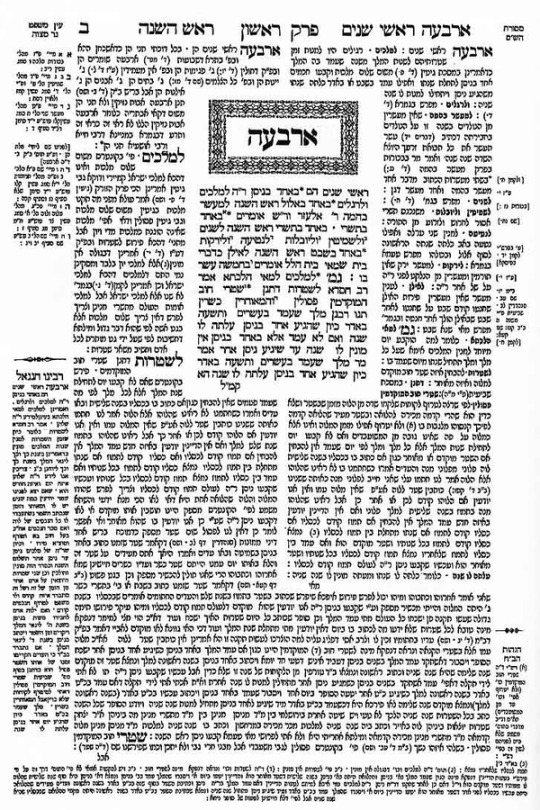
This is what it looks like to have different voices arguing different things about a theological text! The center bit is the "Mishnah," the core text, the law or teaching in question. The outer stuff? That's "Gemara." That's analysis and commentary.
(Important note: I am not Jewish. I am a Christian theologian, and am far from an expert in Jewish theology. Please, do not take my word for everything, Jewish folks are far more knowledgeable about their faith than I am, and I defer to their wisdom. I am simply observing the theological character of the two faiths here.)
COULD YOU IMAGINE if Christianity kept this kind of structure in our theological texts? If we recorded the arguments of particular ideas or teachings, practices and concepts, and put them surrounding the text, fighting for space, with no clear winner? Christian theology has the character of a single person talking to a crowd of people, telling them what to do, what to think, and how to live. Jewish theology has the character of a BUNCH of people talking about a text, coming away with several opinions, then breaking for dinner.
Christians, and especially Christian theologians, I implore you, PLEASE take a class in Rabbinic Studies. I did, and it completely revolutionized how I think about theology, about our origins and how we live our faith. I think Christianity is poorer for losing this conversational structure. I think we have lost the capacity to reasonably converse about our faith, in favor of establishing an authoritative doctrine for the purposes of control.
What I'm saying is we need to introduce a bit of anarchy into our theology. Just a bit. Lose the infatuation with control and authority. Embrace chaos. Embrace mystery. Embrace multiplicity.
But more than anything, ANYTHING--Embrace community. A faith lives and dies by its community. Our common eating with one another. Our common life together. Our community rhythm. And learn from how others live. Your faith will be that much richer for it.
19 notes
·
View notes
